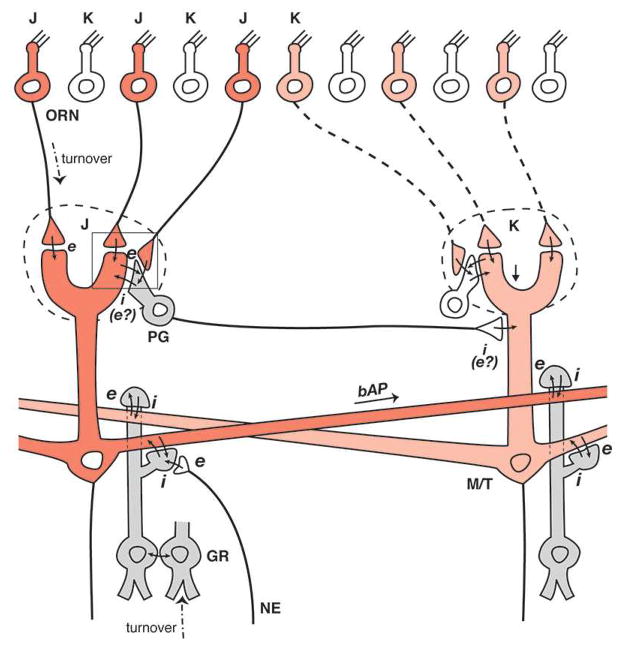Fig. 2.
Incorporation of the original dendrodendritic circuit into glomerular units for widely distributed lateral inhibition in the olfactory bulb, based on recent studies (see text). Two glomerular units are shown, each consisting of a glomerulus receiving inputs from its olfactory receptor neuron (ORN) subset (J,K) and connecting to a subset of mitral/tufted (M/T) cells and their interneurons: periglomerular (PG) cells at the glomerular layer, and granule (GR) cells deep to the mitral cell body layer. A backpropagating action potential (bAP) in the left mitral cell lateral dendrite provides full activation of the granule cells within the glomerular unit on the right, independent of distance, to mediate “non-topographical” lateral inhibition in processing the distributed odor maps laid down in the glomeruli by the activated ORNs. Adapted from (33)

